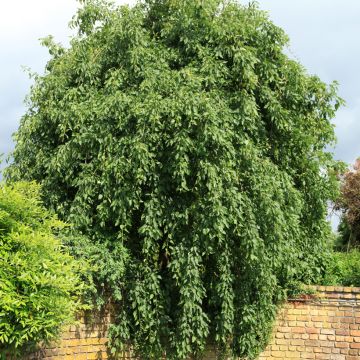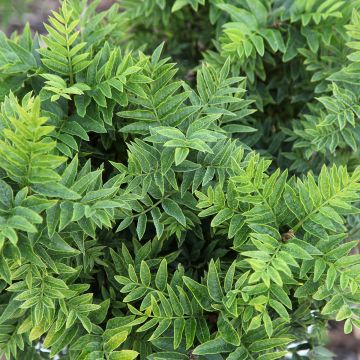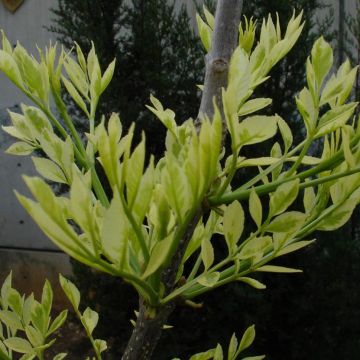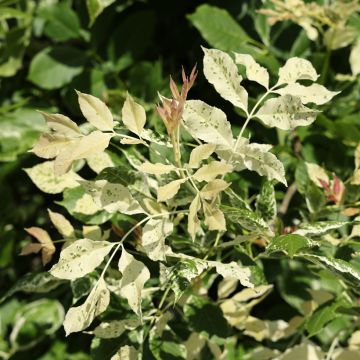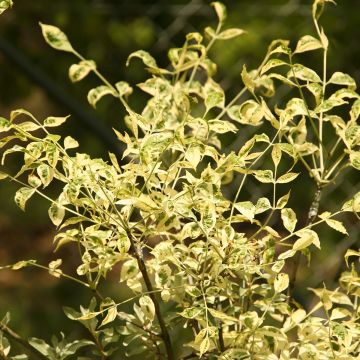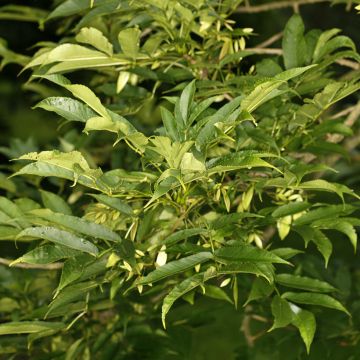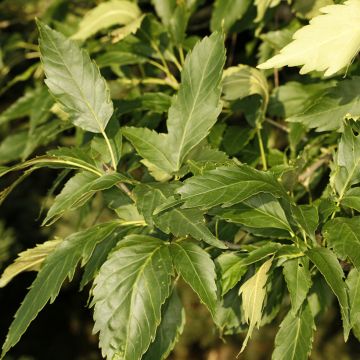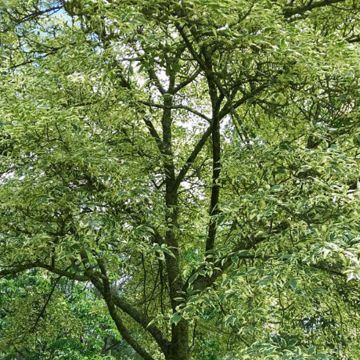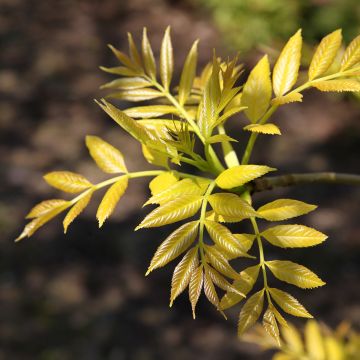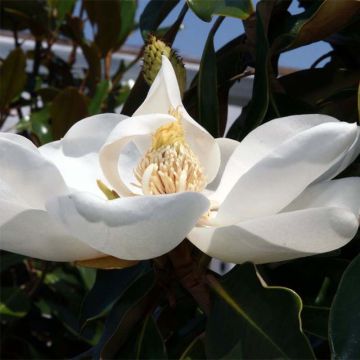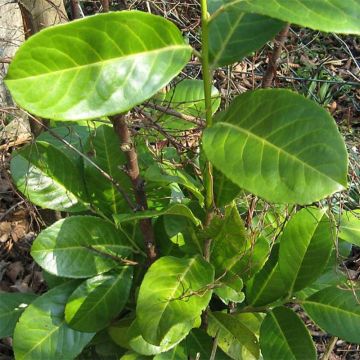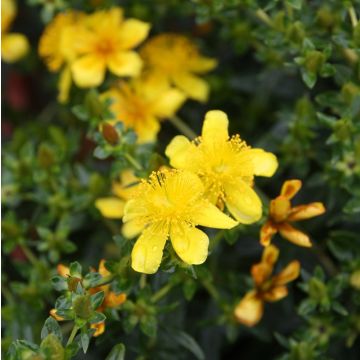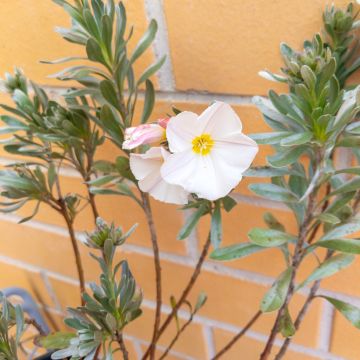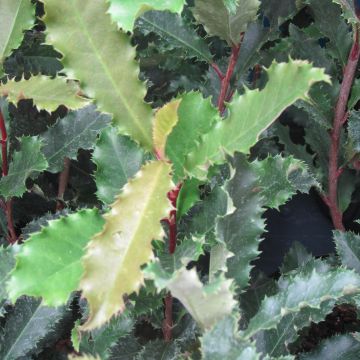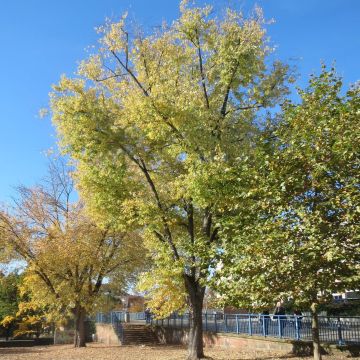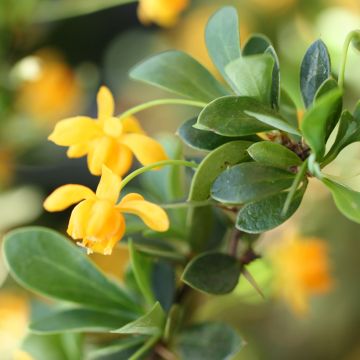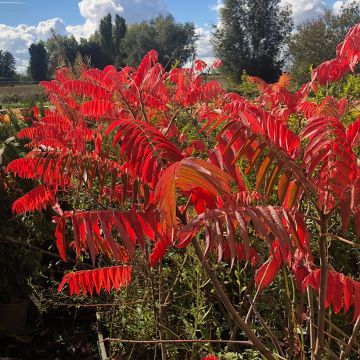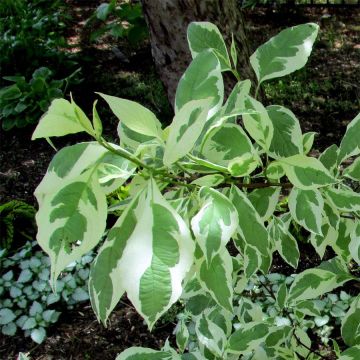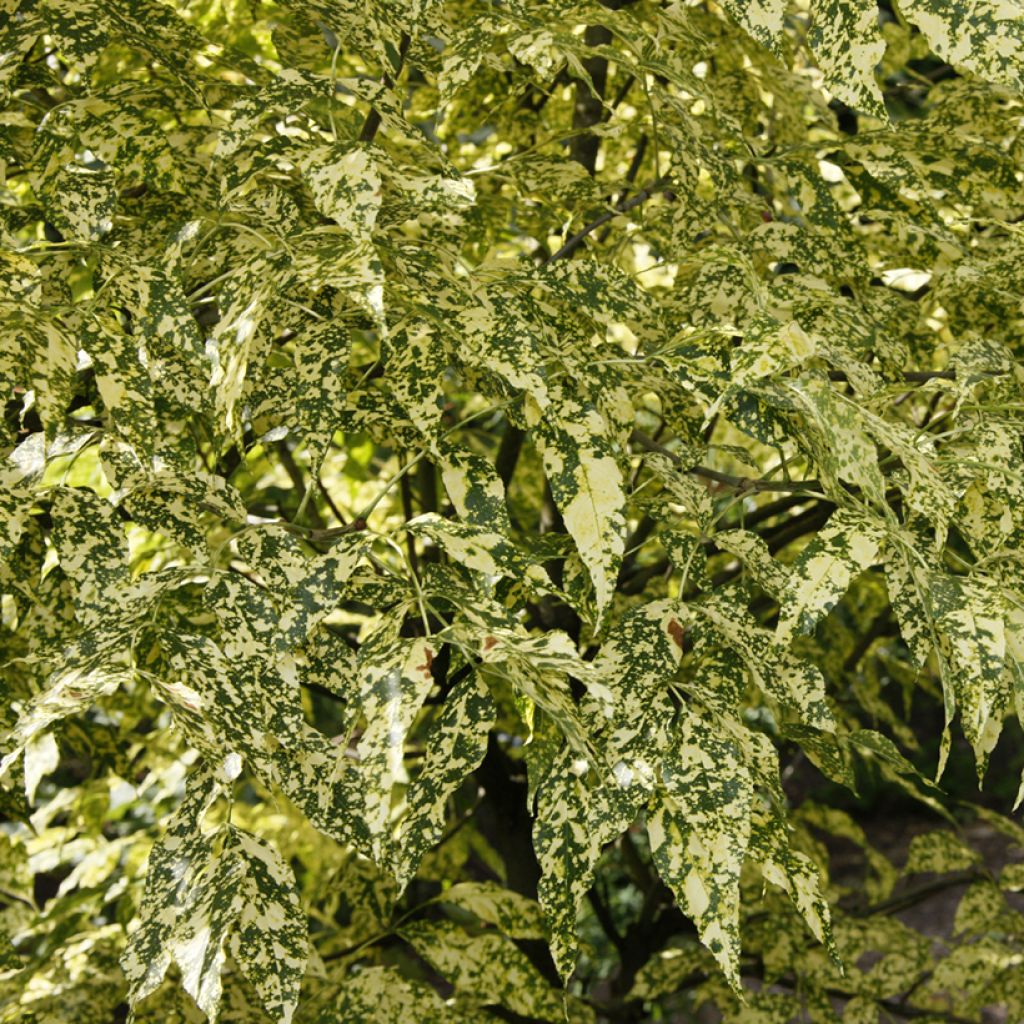

Fraxinus pennsylvanica - Green Ash Aucubifolia
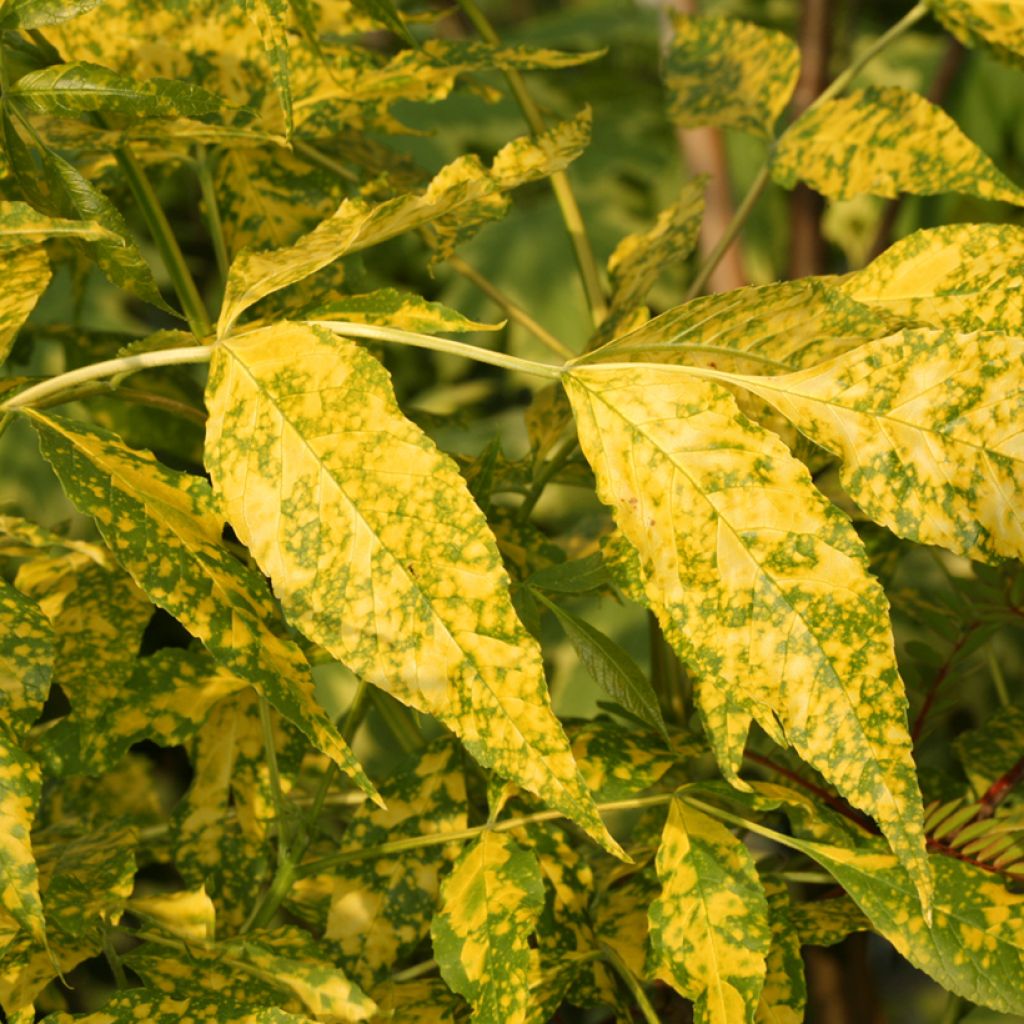

Fraxinus pennsylvanica - Green Ash Aucubifolia
Fraxinus pennsylvanica - Green Ash Aucubifolia
Fraxinus pennsylvanica Aucubifolia
Green Ash, Red Ash
This plant carries a 24 months recovery warranty
More information
We guarantee the quality of our plants for a full growing cycle, and will replace at our expense any plant that fails to recover under normal climatic and planting conditions.
Oversize package: home delivery by special carrier from €6.90 per order..
Express home delivery from €8.90.
Does this plant fit my garden?
Set up your Plantfit profile →
Description
The Fraxinus pennsylvanica 'Aucubifolia' is a variety of Pennsylvania Ash tree that is rare and exceptional due to its yellow-spotted foliage reminiscent of aucuba. Its large, deciduous leaves are bright and elegantly composed of long green leaflets. With slow growth, this tree will become a magnificent specimen to be placed alone in a large garden. Maintenance is limited to light pruning to remove branches that will only produce green leaves. Resistant to air pollution, it adapts well to urban conditions.
The Fraxinus pennsylvanica, commonly known as the red ash or Pennsylvania ash, is a tree in the olive family, just like the olive tree, jasmine, privet, or lilac. It is mainly found in North America, with a wide distribution ranging from the Atlantic coast to Colorado, Alberta, and Montana in the west. Typically, it reaches heights of 12 to 25 metres and its trunk does not exceed 60 cm in diameter. In autumn, its foliage turns a beautiful lemon yellow, which is particularly attractive. Highly resistant to pollution and diseases, it is often used as a street tree. Like most ashes, the pennsylvanica species is dioecious, meaning there are male and female trees.
The Pennsylvania ash 'Aucubifolia' forms a slender tree with a straight trunk. Its crown is upright at first, then becomes broadly oval with age, presenting a harmonious shape. With slow growth, it reaches a height of 12 to 15 metres and a spread of about 8 to 10 metres. The leaves, typical of ashes, measure 20 to 30 cm long. Each leaf is composed of 5 to 9 lanceolate leaflets, each measuring 5 to 10 cm long. What truly distinguishes this variety are the patterns on its leaves: irregular yellow or cream spots on a green background, creating a unique visual effect as they dance in the breeze. This deciduous tree that loses its leaves in autumn does not produce flowers or fruits. The bark of the Pennsylvania ash is greyish and becomes rougher and more fissured with age. The young branches often have a lighter, almost olive green colour that contrasts nicely with the variegated foliage.
The Pennsylvania ash with aucuba-like leaves is a beautiful tree that grows in a free form. Its elegant silhouette and foliage bring an exotic touch to the landscape. It is robust and cold-hardy (down to -30°C), prefers non-calcareous, deep, rich, and moist soils with good drainage. A sunny exposure is preferable, but it can tolerate slightly shaded locations. This tree is sensitive to stagnant water and drought. It can be planted alone or in groups to add colour and light to the garden. It is suitable for ornamental parks and large lawns.
Report an error about the product description
Fraxinus pennsylvanica - Green Ash Aucubifolia in pictures


Plant habit
Foliage
Safety measures
Botanical data
Fraxinus
pennsylvanica
Aucubifolia
Oleaceae
Green Ash, Red Ash
Cultivar or hybrid
atteinterespiratoire
Cette plante peut entraîner des symptômes allergiques.
Evitez de la planter si vous ou vos proches souffrez de rhinite saisonnière ("rhume des foins").
Davantage d'informations sur https://plantes-risque.info
Other Fraxinus - Ash tree
Planting and care
Plant your Fraxinus pennsylvanica 'Aucubifolia' in autumn or spring, choose a sunny but not scorching location, with deep soil, and keep in mind the space it will take up in the long term. If necessary, create a drainage pit with rocks if your soil is suffocating. If your soil is quite poor, a generous addition of leaf compost will be beneficial. Maintain regular watering during the summer following planting and make sure to protect it from prolonged droughts; mulching can help keep the soil cool at the base and reduce the need for watering. This tree requires consistently moist soil, at least in depth. It is perfectly frost-resistant. Pruning should be done every 3 years or so to balance the habit of the tree and to open up the centre of the canopy.
Planting period
Intended location
Care
This item has not been reviewed yet - be the first to leave a review about it.
Striking foliage shrubs
Haven't found what you were looking for?
Hardiness is the lowest winter temperature a plant can endure without suffering serious damage or even dying. However, hardiness is affected by location (a sheltered area, such as a patio), protection (winter cover) and soil type (hardiness is improved by well-drained soil).

Photo Sharing Terms & Conditions
In order to encourage gardeners to interact and share their experiences, Promesse de fleurs offers various media enabling content to be uploaded onto its Site - in particular via the ‘Photo sharing’ module.
The User agrees to refrain from:
- Posting any content that is illegal, prejudicial, insulting, racist, inciteful to hatred, revisionist, contrary to public decency, that infringes on privacy or on the privacy rights of third parties, in particular the publicity rights of persons and goods, intellectual property rights, or the right to privacy.
- Submitting content on behalf of a third party;
- Impersonate the identity of a third party and/or publish any personal information about a third party;
In general, the User undertakes to refrain from any unethical behaviour.
All Content (in particular text, comments, files, images, photos, videos, creative works, etc.), which may be subject to property or intellectual property rights, image or other private rights, shall remain the property of the User, subject to the limited rights granted by the terms of the licence granted by Promesse de fleurs as stated below. Users are at liberty to publish or not to publish such Content on the Site, notably via the ‘Photo Sharing’ facility, and accept that this Content shall be made public and freely accessible, notably on the Internet.
Users further acknowledge, undertake to have ,and guarantee that they hold all necessary rights and permissions to publish such material on the Site, in particular with regard to the legislation in force pertaining to any privacy, property, intellectual property, image, or contractual rights, or rights of any other nature. By publishing such Content on the Site, Users acknowledge accepting full liability as publishers of the Content within the meaning of the law, and grant Promesse de fleurs, free of charge, an inclusive, worldwide licence for the said Content for the entire duration of its publication, including all reproduction, representation, up/downloading, displaying, performing, transmission, and storage rights.
Users also grant permission for their name to be linked to the Content and accept that this link may not always be made available.
By engaging in posting material, Users consent to their Content becoming automatically accessible on the Internet, in particular on other sites and/or blogs and/or web pages of the Promesse de fleurs site, including in particular social pages and the Promesse de fleurs catalogue.
Users may secure the removal of entrusted content free of charge by issuing a simple request via our contact form.
The flowering period indicated on our website applies to countries and regions located in USDA zone 8 (France, the United Kingdom, Ireland, the Netherlands, etc.)
It will vary according to where you live:
- In zones 9 to 10 (Italy, Spain, Greece, etc.), flowering will occur about 2 to 4 weeks earlier.
- In zones 6 to 7 (Germany, Poland, Slovenia, and lower mountainous regions), flowering will be delayed by 2 to 3 weeks.
- In zone 5 (Central Europe, Scandinavia), blooming will be delayed by 3 to 5 weeks.
In temperate climates, pruning of spring-flowering shrubs (forsythia, spireas, etc.) should be done just after flowering.
Pruning of summer-flowering shrubs (Indian Lilac, Perovskia, etc.) can be done in winter or spring.
In cold regions as well as with frost-sensitive plants, avoid pruning too early when severe frosts may still occur.
The planting period indicated on our website applies to countries and regions located in USDA zone 8 (France, United Kingdom, Ireland, Netherlands).
It will vary according to where you live:
- In Mediterranean zones (Marseille, Madrid, Milan, etc.), autumn and winter are the best planting periods.
- In continental zones (Strasbourg, Munich, Vienna, etc.), delay planting by 2 to 3 weeks in spring and bring it forward by 2 to 4 weeks in autumn.
- In mountainous regions (the Alps, Pyrenees, Carpathians, etc.), it is best to plant in late spring (May-June) or late summer (August-September).
The harvesting period indicated on our website applies to countries and regions in USDA zone 8 (France, England, Ireland, the Netherlands).
In colder areas (Scandinavia, Poland, Austria...) fruit and vegetable harvests are likely to be delayed by 3-4 weeks.
In warmer areas (Italy, Spain, Greece, etc.), harvesting will probably take place earlier, depending on weather conditions.
The sowing periods indicated on our website apply to countries and regions within USDA Zone 8 (France, UK, Ireland, Netherlands).
In colder areas (Scandinavia, Poland, Austria...), delay any outdoor sowing by 3-4 weeks, or sow under glass.
In warmer climes (Italy, Spain, Greece, etc.), bring outdoor sowing forward by a few weeks.

































